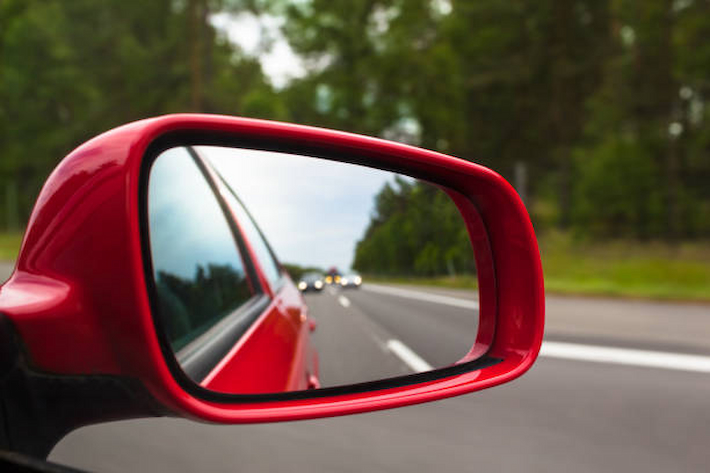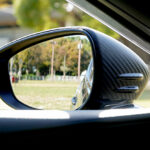For about some 130 years now, cars have been a part of our society, be it for utility or status. Throughout those years, one thing has stayed constant, and that is innovation. This has made vehicles change quite a bit, especially during two periods, the ’90s to 2000s and the ’60s to ’70s.
Nowadays, cars are nothing like they were in the early 1900s, and one small component – the door mirror, which wasn’t a part of the early automobile design, is solid proof of it. Today, we can’t imagine stepping into a vehicle if it doesn’t have side mirrors. These crucial parts are what allow us to have a clear view of everything going on around and safely navigate traffic. So, let’s learn something more about the crucial auto mirror range of today.
Types of Door Mirrors

Just like, say, headlights, there are different types of door mirrors a vehicle can have depending on its year and make.
Concave
The most commonly used type of side mirror glass is concave. What this means is that the surface of the glass curves inward, thus away from any light sources. This way, the light from the auto mirror glass is reflected across a large area, making for a narrow field of view, which is quite limiting, but it showcases vehicles and objects behind at the correct distance, without distorting your view of them.
Convex
With convex replacement auto mirrors, you can expect the glass they use to have an outward curve. This means the surface reflects light towards the mirror. This brings a wider field of view, which means you can see more of what’s going on behind you. This is why newer vehicles have some text on the glass stating that objects are closer than they appear in the mirror.
Advanced Auto Mirror Features
Heating
One of the most fundamental features of many newer vehicles, when it comes to door mirrors, is the heating element. When the glass is wet or has snow on it, you can use it to dry or melt away any of it so you can see it clearly. This is usually operated by the rear defrost button or a separate button just for the auto car mirror heating element.
Power Adjustable
Almost 99% of replacement auto mirrors nowadays are power adjustable and long are the days with handles sticking out the door that let you position the mirrors. This is especially convenient when it comes to adjusting the mirror on the passenger side, as you don’t need to move from one seat to another to get it right.
Indicators
Some more luxurious vehicles or higher trim levels of more reasonably priced vehicles include indicators fitted in the housing of the side mirror. This isn’t anything novel, but it can make your vehicle safer as you have one more area that tells other drivers where you’re headed. However, this also adds complexity, making replacement a tad more difficult.
Puddle Lights
Although quite rare on most vehicles, puddle lights can also be found in some mirrors as part of the housing. These lights point down and illuminate the area before the door so that you don’t step into a puddle or something more concerning. These lights turn on when you unlock the car or open the door.
Folding
Most door mirrors since the ’80s and ’90s are folding. The main difference with today’s designs is that now you can control them with the press of a button. This means you can make them fold every time you lock your car or when you press a button on the key fob. Like other electronically operated features, this also adds a certain level of complexity, which increases the price of the component.
Blind Spot Detection
Blind spot monitoring or detection is a crucial safety feature of modern mirrors. This feature involves a small indicator on the driver’s side mirror that flashes when a car is in your blind spot. Some have lights instead of warning signs, which are found on the plastic part of the side mirror.
Electrochromic
A more advanced feature than blind spot detection is electrochromic glass. These mirrors can change their colour when a bright beam of light is detected. This helps prevent you from getting blinded when someone is tailgating or has their high beams on.
Tips for Safety

Parking
To keep your new auto mirror in the best shape possible, you should be extra careful when parking. This goes especially when you’re reversing into a parking bay, as it’s a lot easier to come into contact with other vehicles and/ or buildings.
Adjustment
A properly adjusted mirror means a lower risk of mishaps, especially when it comes to lane changes and parking. Make sure that the mirror has a bit of the side of your car in view, and the rest should be the road. Properly setting up your mirrors goes a long way when it comes to safety.
Cleaning
Cleaning each car mirror and its housing ensures that you can see clearly what is to the side of you, but that it lasts a long time, too. Waxing or polishing the plastic housing can also help prolong its lifespan.
Tight Spaces
When driving through tight spaces or parking into them, make sure to judge the width of your car by the side mirrors and fold them in if necessary, in order to get through.




